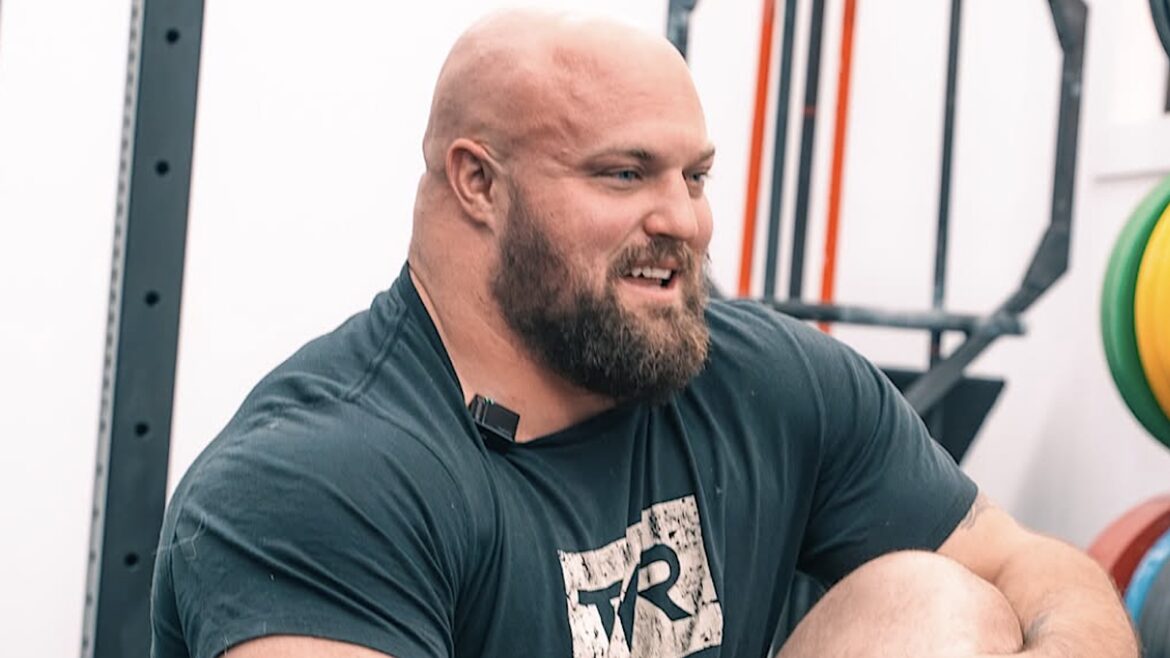By concentrating on the six fundamental movement patterns, you can effectively build strength in just 30-minute workouts.
Looking to build strength but struggling to find time? Mitchell Hooper, the 2024 Strongest Man on Earth (SMoE) and three-time Arnold Strongman Classic (ASC) champion, recently revealed a scientifically designed 30-minute daily workout plan that includes bodyweight workouts to help increase strength.
Putting a High Degree of Effort
Hooper regards this as one of the most fundamental principles — that high intensity is necessary during strength training.
Adequate Loading
Resistance training must be challenging to get stronger. The load must be significant relative to the lifter’s strength to create an effective challenge.
Skill-Specific Training
Someone aiming to improve squat technique needs to develop the lift as they would any other skill. While exercises like leg presses can help build leg strength, mastering squats requires consistent practice through a dedicated routine.
Use Low Volume
Low training volumes help develop the nervous system, while the muscular system thrives on higher volumes to build strength. On the other hand, mastering a skill requires frequent practice with low training volumes.
“This bodes well when you’re time-constrained,” Hooper explained. These principles are versatile, applying to a broad spectrum of individuals, from elite athletes to everyday people, even for short-term periods.
How to Build a 30-Minute Strength Workout
Hooper presented the following plan for a focused, 30-minute strength training session:
- Three to Five Minutes General Warm-Ups
- Five to 10 Minutes Specific Warm Ups
- High-Effort Top Set
Start a strength workout with a three to five-minute warm-up. Research suggests that warming up before intense exercises can improve overall performance and routine efficiency. (1)
After a general warm-up, proceed to specific warm-ups tailored to your exercise. For example, if doing squats, the warm-up could include four sets of 10, eight, six, and four reps, gradually increasing intensity.
Aim for an effort level of five to six out of 10. Studies show that specific warm-ups enhance performance and improve neuromuscular activation. (2)
After about 25 minutes, you’ll be ready for your top set — a single, high-effort set that challenges limits.
You’ll get strong in one set. That is the point.
—Mitchell Hooper
Study on Getting Strong
High training volume achieves muscle growth, while high training frequency develops strength. Building muscle with this approach is still possible for less-experienced individuals.
A review in Sports Medicine examines the training dose required to enhance one-rep max (1RM) strength in resistance-trained men. The study revealed that performing one set, between one and three times per week, was enough to produce significant 1RM strength gains. (3) However, the key was to ensure that the set was performed at high intensity, utilizing a heavy load and pushing close to the individual’s maximum capacity.
Training Dose Principles
Building strength depends on three key principles that determine the amount of training volume your body can manage. These principles are:
- Minimum Effective Dose (lowest to get results)
- Maximum Tolerable Volume (the highest amount before one’s body starts breaking down)
- Optimal Training Dose
For those seeking to grow stronger, adopt the minimum effective dose. Pursuing the optimal dose provides the middle ground to balance performance and strength.
Exercises to Get Strong
Hooper suggested incorporating functional training, performed once a week, to enhance strength across various movement patterns. The six foundational movements are push, pull, squat, carry, hinge, and overhead press.
Bodyweight Exercises to Build Strength
Below are bodyweight exercises for the fundamental movement patterns:
A Weekly Training Plan to Get Strong
More Strongman Content
References
- Fradkin, A. J., Zazryn, T. R., & Smoliga, J. M. (2010). Effects of warming-up on physical performance: a systematic review with meta-analysis. Journal of strength and conditioning research, 24(1), 140–148. https://doi.org/10.1519/JSC.0b013e3181c643a0
- Abad, C. C., Prado, M. L., Ugrinowitsch, C., Tricoli, V., & Barroso, R. (2011). Combination of general and specific warm-ups improves leg-press one repetition maximum compared with specific warm-up in trained individuals. Journal of strength and conditioning research, 25(8), 2242–2245. https://doi.org/10.1519/JSC.0b013e3181e8611b
- Androulakis-Korakakis, P., Fisher, J. P., & Steele, J. (2020). The Minimum Effective Training Dose Required to Increase 1RM Strength in Resistance-Trained Men: A Systematic Review and Meta-Analysis. Sports medicine (Auckland, N.Z.), 50(4), 751–765. https://doi.org/10.1007/s40279-019-01236-0
Featured image: @mitchellhooper on Instagram
